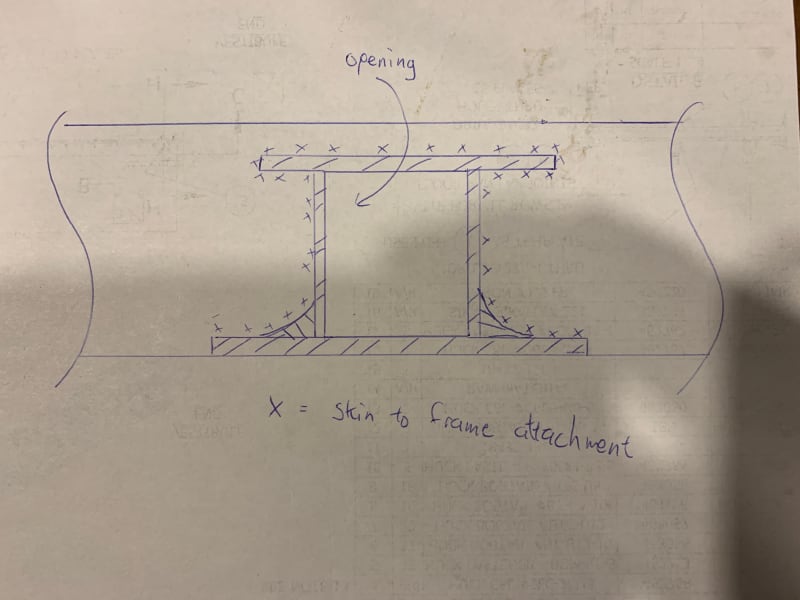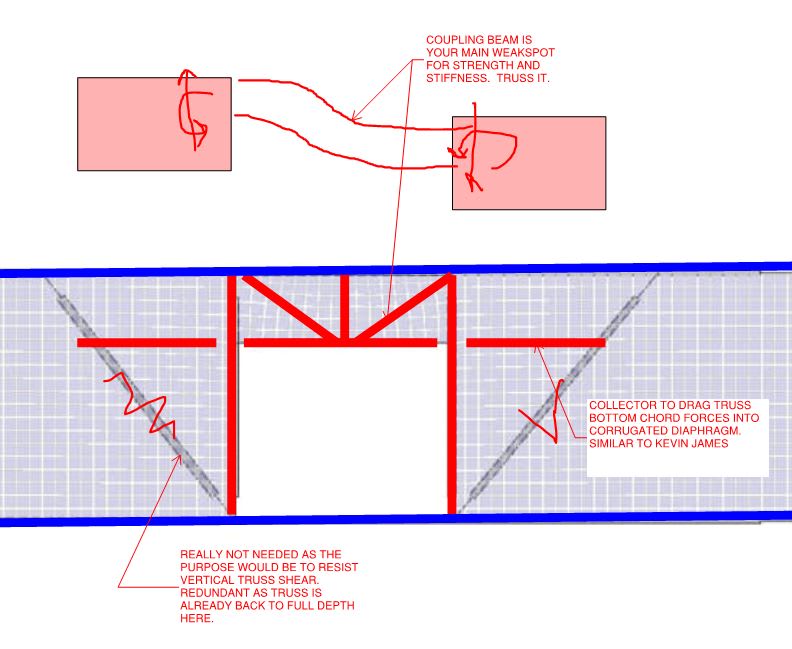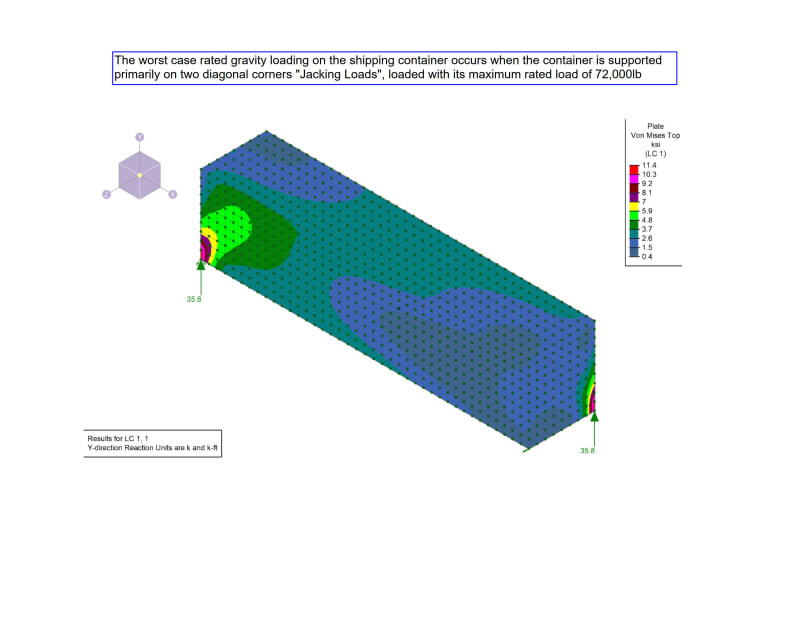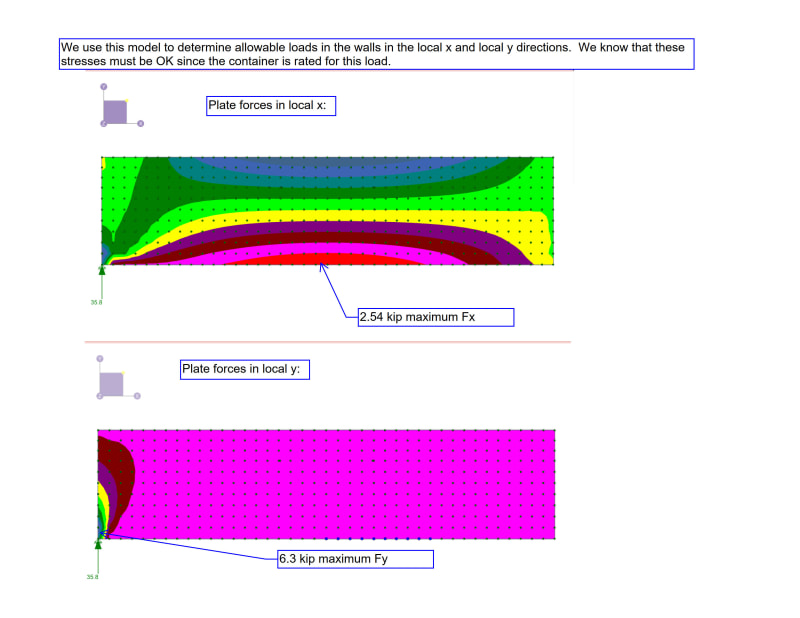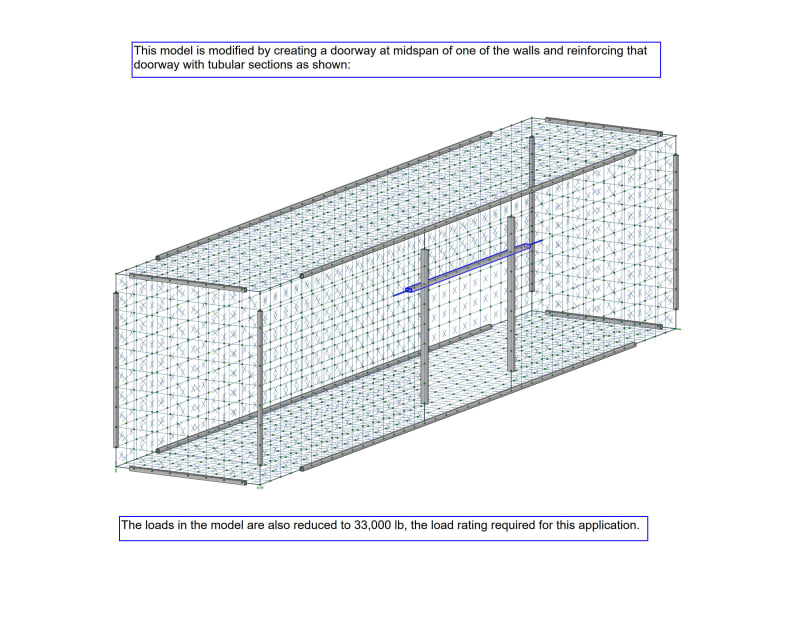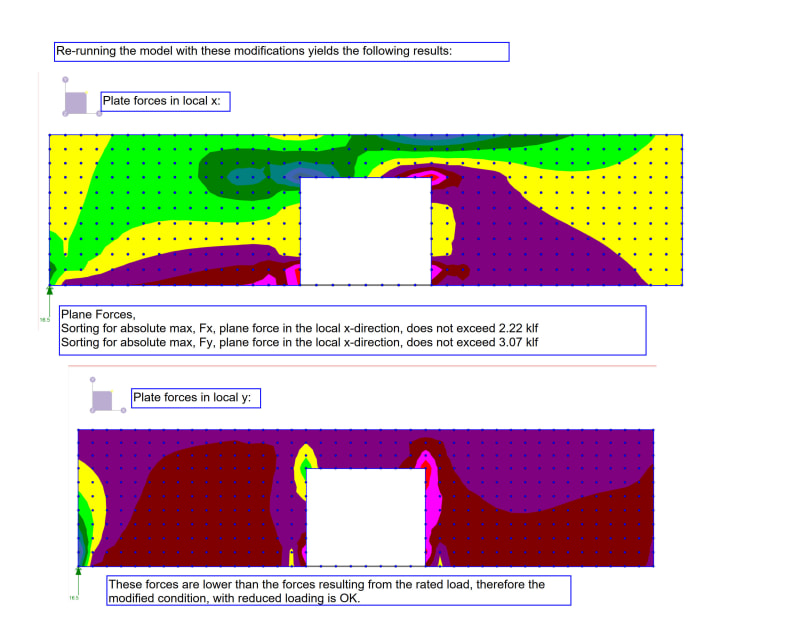Adding a Door to a Shipping Container
There was recently a request for more technical content on here, so here's one...
I have an unusual request - to add a door to the side of a 40ft shipping container "40HC".
Technical drawings for a 40HC Shipping Container:
The walls of the container behave as trusses or built up beams with the top rail of the container serving as the top flange/chord and the bottom rail being the bottom flange/chord. The wall acts as the web.
This beam spans between support points at the two far sides.
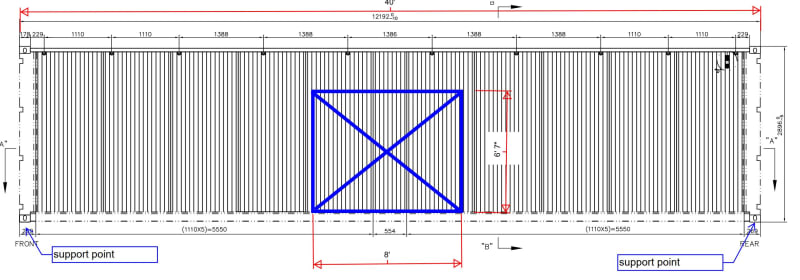
Wall Elevation of 40HC Shipping Container with Door Midspan
Since the door is directly in the middle of the span, shear forces at this location will be minimal compared to those at the corners, so the door should be more feasible in the center of the container.
There is another fly in the ointment that the walls are corrugated:
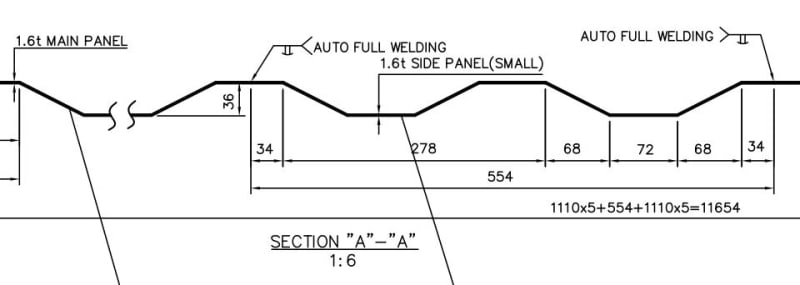
I created a simplified FEA model assuming non-corrugated steel shells and omitting the opening with these preliminary results:
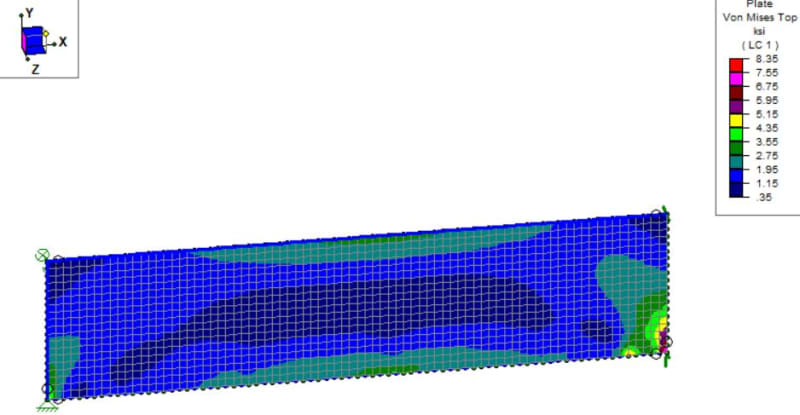
This was done to establish a baseline of stresses in the corrugations - my model indicates a maximum of 8.4ksi (my cargo container is not evenly loaded, so there are higher stresses on one side than the other). This gives me a baseline to compare the next model against.
I then added the opening, framing it with HSS posts and a header, and I get 18ksi in the corners next to the openings. This, being double my previous maximum, seems like more than I should be allowing.
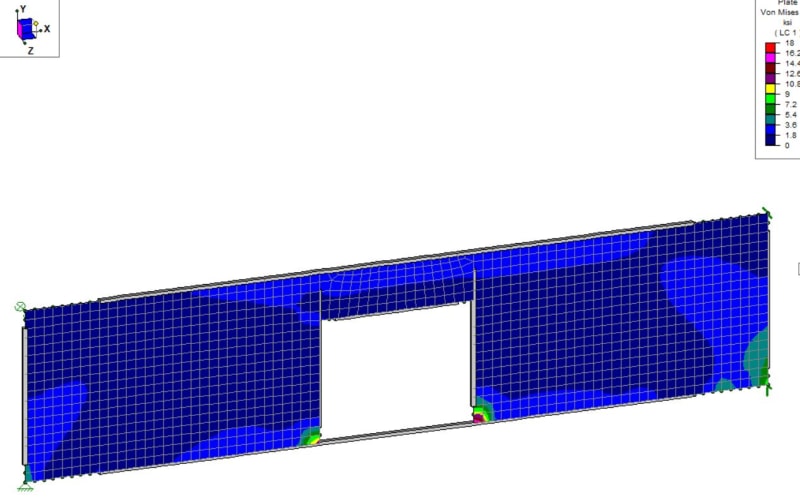
I added PL3/16x3 straps at 45 degrees to try and stiffen that corner, but since the RISA model considers the straps to be just about as stiff as the wall panels (modeled as flat where they are really corrugated), it doesn't change the stress concentrations much.
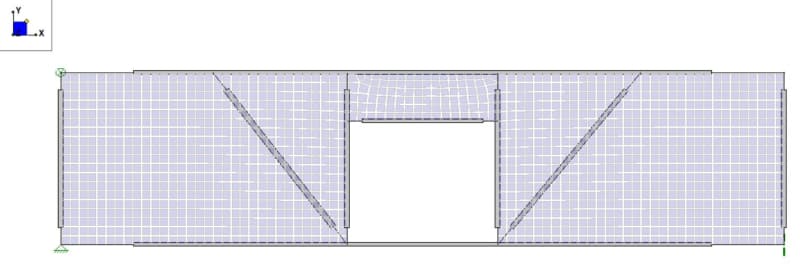
So what would you do? Add the diagonal straps? Omit them? Find some fancy-dancy way to accurately model corrugations?
It seems logical to me that if there are stress concentrations in the corners that the corrugations will undergo limited plastic deformation until the stress concentrations are more uniform and at acceptable levels, so by that logic, straps wouldn't be necessary. Am I insane?
There was recently a request for more technical content on here, so here's one...
I have an unusual request - to add a door to the side of a 40ft shipping container "40HC".
Technical drawings for a 40HC Shipping Container:
The walls of the container behave as trusses or built up beams with the top rail of the container serving as the top flange/chord and the bottom rail being the bottom flange/chord. The wall acts as the web.
This beam spans between support points at the two far sides.

Wall Elevation of 40HC Shipping Container with Door Midspan
Since the door is directly in the middle of the span, shear forces at this location will be minimal compared to those at the corners, so the door should be more feasible in the center of the container.
There is another fly in the ointment that the walls are corrugated:

I created a simplified FEA model assuming non-corrugated steel shells and omitting the opening with these preliminary results:

This was done to establish a baseline of stresses in the corrugations - my model indicates a maximum of 8.4ksi (my cargo container is not evenly loaded, so there are higher stresses on one side than the other). This gives me a baseline to compare the next model against.
I then added the opening, framing it with HSS posts and a header, and I get 18ksi in the corners next to the openings. This, being double my previous maximum, seems like more than I should be allowing.

I added PL3/16x3 straps at 45 degrees to try and stiffen that corner, but since the RISA model considers the straps to be just about as stiff as the wall panels (modeled as flat where they are really corrugated), it doesn't change the stress concentrations much.

So what would you do? Add the diagonal straps? Omit them? Find some fancy-dancy way to accurately model corrugations?
It seems logical to me that if there are stress concentrations in the corners that the corrugations will undergo limited plastic deformation until the stress concentrations are more uniform and at acceptable levels, so by that logic, straps wouldn't be necessary. Am I insane?

